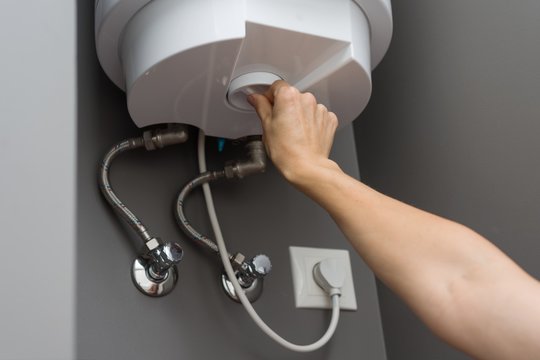What to Care for Your Home's Hot Water System ProperlyWays to Prolong the Lifespan of Your Home's Hot Water System By MaintenanceKey Maintenance Tips for Your Home's Hot Water System
What to Care for Your Home's Hot Water System ProperlyWays to Prolong the Lifespan of Your Home's Hot Water System By MaintenanceKey Maintenance Tips for Your Home's Hot Water System
Blog Article
The publisher is making a number of good pointers on the subject of Tips on Maintaining a Water Heater as a whole in the content beneath.
:max_bytes(150000):strip_icc()/how-to-drain-a-water-heater-2719055-hero-35f0548b0f1f42f0b13ba96a33ab8da2.jpg)
Warm water is necessary for daily convenience, whether it's for a rejuvenating shower or washing recipes. To ensure your warm water system runs effectively and lasts longer, normal maintenance is vital. This article supplies sensible ideas and insights on just how to maintain your home's hot water system to stay clear of interruptions and costly repair services.
Introduction
Keeping your home's hot water system could seem overwhelming, however with a few basic steps, you can guarantee it operates efficiently for several years to find. This guide covers everything from recognizing your hot water system to DIY maintenance pointers and recognizing when to hire specialist aid.
Value of Preserving Your Hot Water System
Normal upkeep not only extends the life-span of your warm water system but also guarantees it operates successfully. Ignoring maintenance can lead to reduced effectiveness, higher power expenses, and even early failing of the system.
Signs Your Warm Water System Requirements Maintenance
Recognizing when your hot water system requires attention can prevent significant issues. Keep an eye out for indications such as inconsistent water temperature level, strange sounds from the heating unit, or corroded water.
Comprehending Your Hot Water System
Prior to diving into upkeep tasks, it's handy to understand the fundamental components of your hot water system. Commonly, this includes the water heater itself, pipelines, anode rods, and temperature level controls.
Monthly Upkeep Tasks
Regular regular monthly checks can help catch small issues before they rise.
Flushing the Water Heater
Purging your water heater eliminates debris buildup, improving effectiveness and lengthening its life.
Checking and Changing Anode Rods
Anode poles prevent rust inside the container. Inspecting and replacing them when worn is critical.
Inspecting and Adjusting Temperature Settings
Changing the temperature level settings makes certain optimal efficiency and safety.
DIY Tips for Upkeep
You can perform a number of upkeep tasks on your own to maintain your hot water system in leading problem.
Checking for Leakages
Regularly check pipelines and connections for leaks, as these can bring about water damage and higher costs.
Testing Stress Alleviation Valves
Testing the pressure relief valve ensures it functions properly and stops extreme stress accumulation.
Protecting Pipes
Protecting warm water pipelines reduces warmth loss and can conserve power.
When to Call a Specialist
While do it yourself upkeep is beneficial, some concerns call for specialist expertise.
Complex Issues Requiring Professional Help
Examples include major leaks, electrical problems, or if your hot water heater is consistently underperforming.
Regular Specialist Upkeep Conveniences
Specialist upkeep can include extensive assessments, tune-ups, and ensuring compliance with safety criteria.
Verdict
Normal upkeep of your home's hot water system is crucial for effectiveness, durability, and cost savings. By adhering to these ideas and understanding when to look for specialist assistance, you can guarantee a reputable supply of warm water without unanticipated interruptions.
Water Heater Maintenance Tips
Test the TPR Valve
Shut off the power and the cold-water supply valve. Place a bucket under the pipe connected to the temperature-pressure-release (TPR) valve on the top or side of the tank. (This valve opens if the tank pressure gets too high.) Lift the valve’s tab to let some water out, then let go. If water keeps flowing, drain the tank partway, unscrew the old valve with a pipe wrench, and install a new one. Check the Anode Rod
Put a hose to the tank’s drain cock and let out a few gallons of water. Now fit a 1 1/16-inch socket onto the rod’s hex head on top of the heater (or under its top plate) and unscrew the rod. If it’s less than ½ inch thick or coated with calcium, buy a new one, wrap its threads with Teflon tape, put it back in the tank, and tighten securely. Use this segmented rod if headroom above the tank is limited. Drain the Tank and Wash Out Sediment
Drain the remaining water in the tank into the bucket, then stir up the sediment on the tank’s bottom by briefly opening the cold-water supply valve. Drain and repeat until clean water comes out of the hose. Close the drain cock, refill the tank, and turn its power back on. Adjust the Temperature
Find the temperature dial on the side of the tank and unscrew its cover. Adjust the dial to 120 degrees using a flathead screwdriver. For every 10 degrees the temperature is lowered, you can expect to save up to 5 percent in energy costs. Turn the water heater off or the thermostat down to its lowest setting if you plan to be away from home for more than three days. Insulate the Pipes
Buy some self-sticking 3/8-inch-thick foam pipe insulation that matches the pipes’ diameter. Slide the foam over the hot-and cold-water pipes as far as you can reach. Insulating the cold-water pipe prevents condensation in summer. Peel the tape and squeeze the insulation closed. If the pipe is 6 inches or less from the flue, cover it with 1-inch-thick unfaced fiberglass pipe wrap. https://www.thisoldhouse.com/plumbing/21016402/how-to-maintain-a-water-heater

Hopefully you liked our piece about Tips For Maintaining Your Hot Water Heater. Thank you for taking time to read through our blog post. Sharing is caring. Helping people is fun. Thank you for being here. Come back soon.
Visit Page Report this page